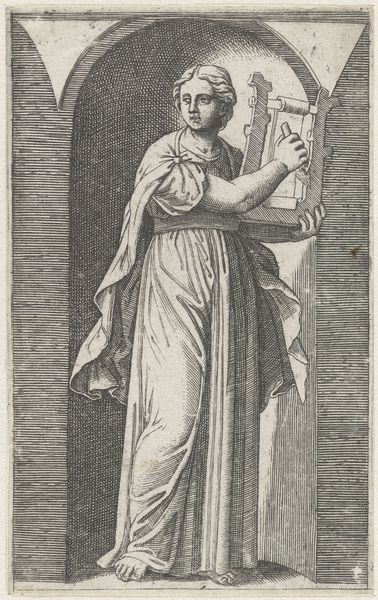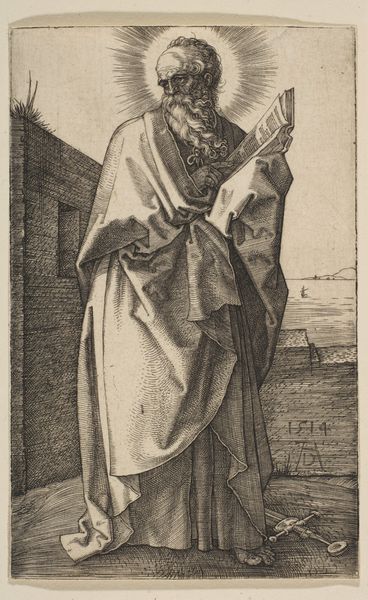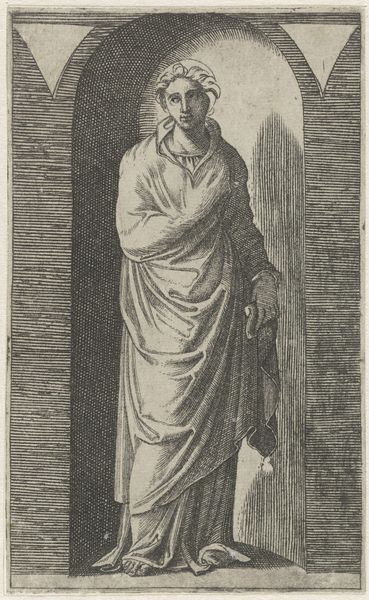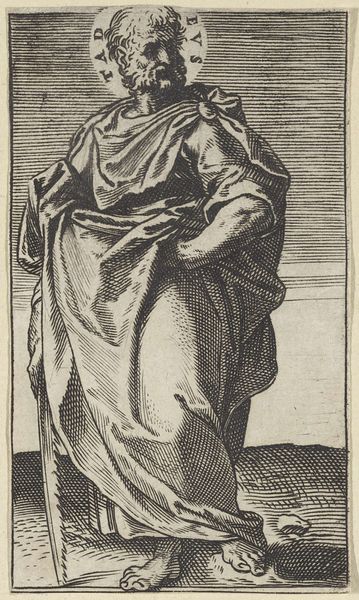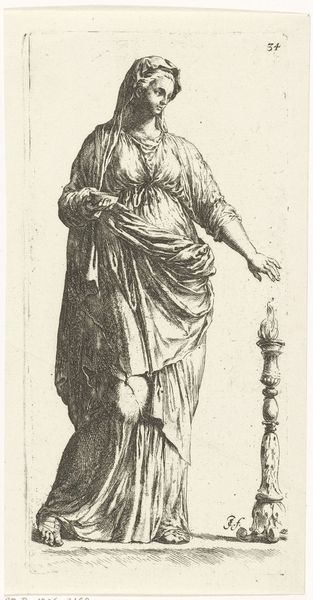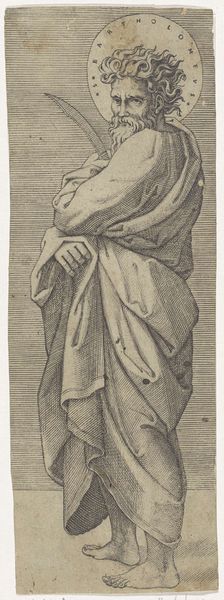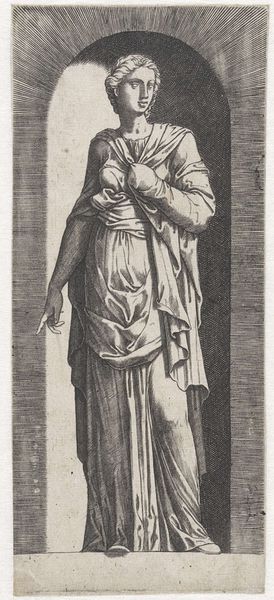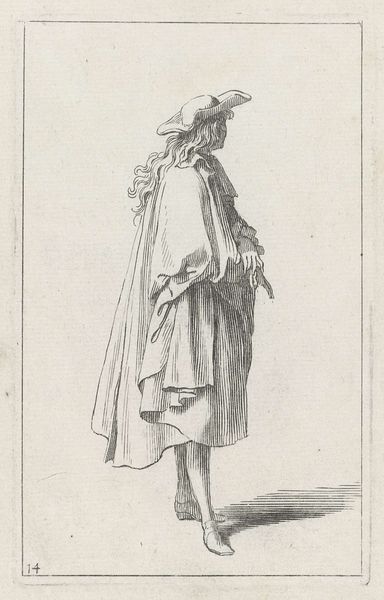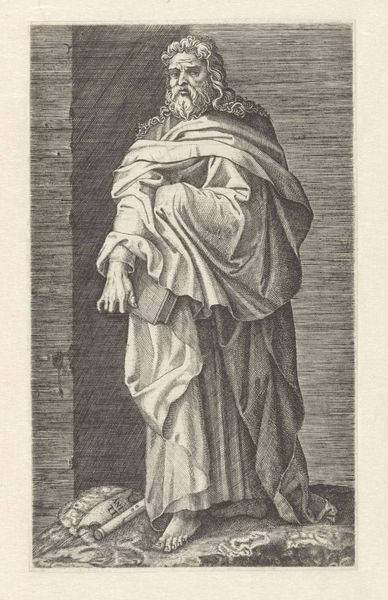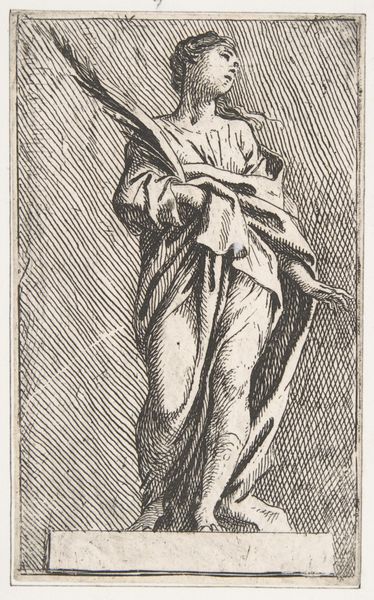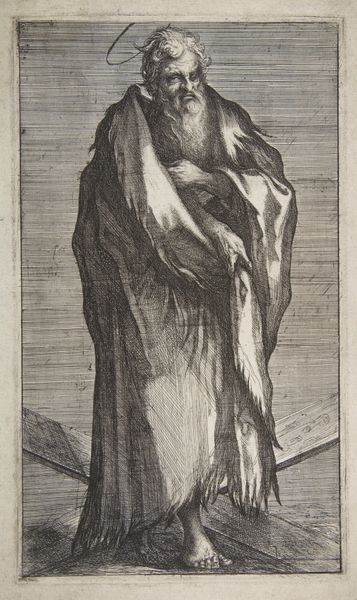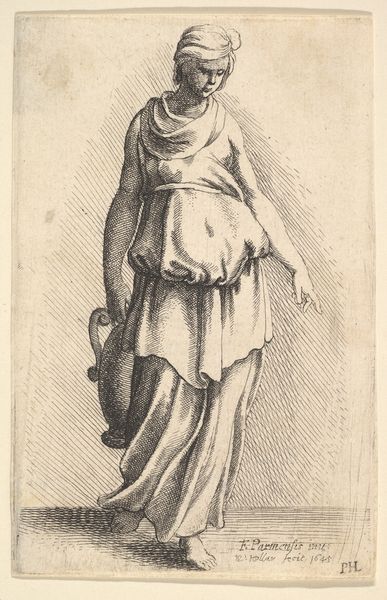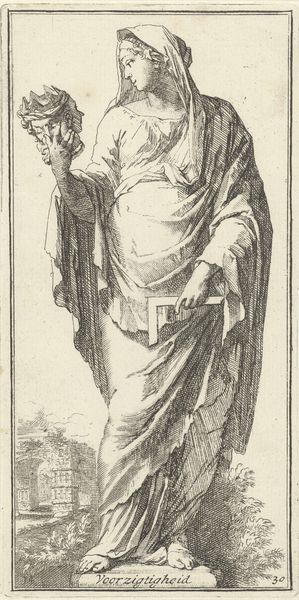
drawing, print
#
drawing
#
light pencil work
#
mechanical pen drawing
# print
#
pen illustration
#
pen sketch
#
pencil sketch
#
personal sketchbook
#
ink drawing experimentation
#
pen-ink sketch
#
men
#
sketchbook drawing
#
sketchbook art
Dimensions: sheet: 4 1/2 x 2 15/16 in. (11.4 x 7.5 cm)
Copyright: Public Domain
Editor: Here we have Pierre Ignace Parrocel's "Standing Female Figure," a print from around 1739-1740. The lines are so clean and precise; she almost looks like a neoclassical sculpture. How do you read this work, considering its historical context? Curator: Well, put simply, it's crucial to remember the societal function of art during Parrocel's time. Prints like these often served as visual records, disseminating information and stylistic trends amongst a growing public audience. Did printmaking in particular change or solidify any notions of gender? Editor: That's a fascinating point. I suppose that depicting women in classical poses like this would suggest education and high social standing. What role do museums and other galleries play in art accessibility to the public, particularly in light of pieces like this one? Curator: Indeed! This highlights the powerful influence institutions exert in shaping our understanding of art. By showcasing certain works and narratives, they essentially dictate what we value and remember about history. This piece's presentation within the Met Museum undoubtedly adds another layer of interpretation tied to cultural significance, doesn't it? Editor: Definitely! Now, I'm wondering, could the distribution of prints in Parrocel’s time possibly suggest what values or roles were considered proper? Curator: Precisely. Through understanding distribution, one could glean important implications about socio-political leanings, artistic value systems, and the politics of gender roles. It really makes you consider the artist’s goals when producing the piece and the public's interpretation and reception in shaping history. Editor: I had never thought of it quite like that before, of a museum’s implicit shaping of opinions! Thanks for illuminating such interesting historical facets. Curator: It's a pleasure! Looking critically at the artwork allows us to unpack the socio-political framework it exists within and reframe it, opening the door to countless further avenues of cultural interpretations.
Comments
No comments
Be the first to comment and join the conversation on the ultimate creative platform.
